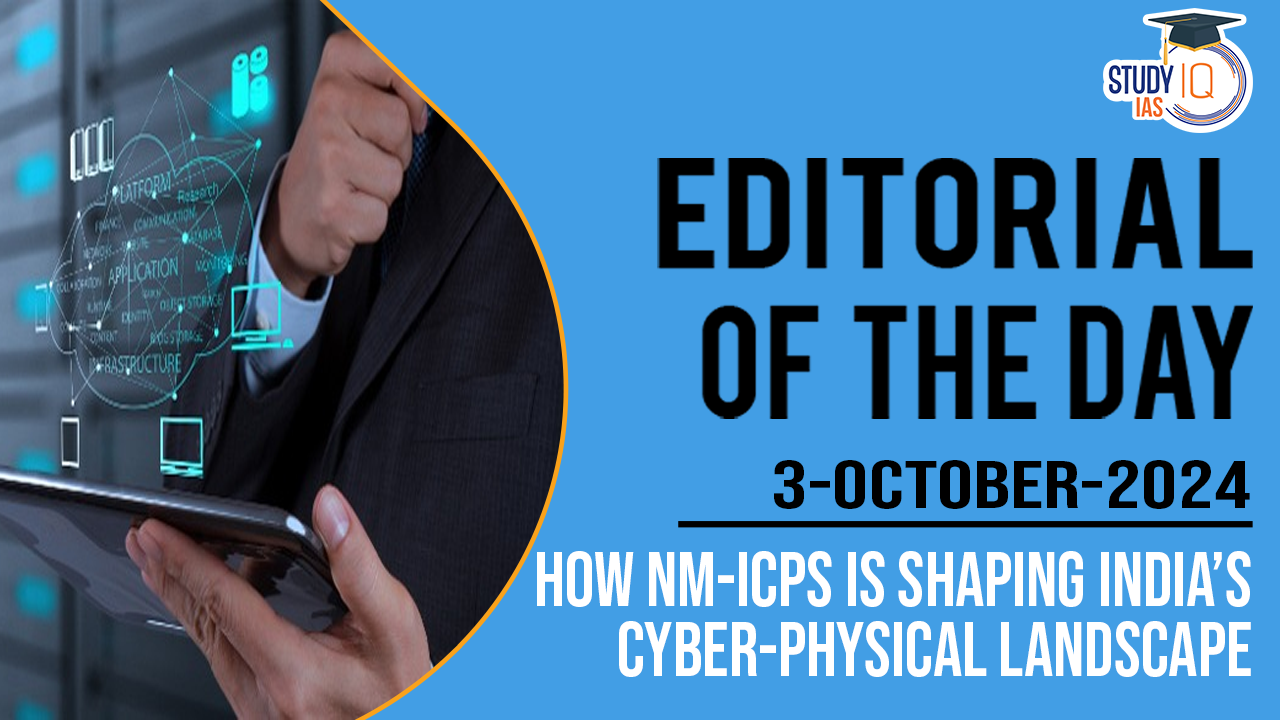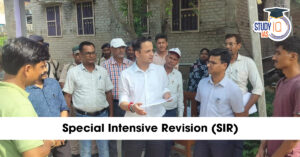Table of Contents
Context: As part of the 100-day agenda the government launched BharatGen at IIT Bombay to develop multilingual (across 22 Indian languages) and multimodal AI (speech, text, and vision) models under the National Mission on Interdisciplinary Cyber-Physical Systems (NM-ICPS).
About NM-ICPS
- Launched in: December 2018
- Goal: To establish India as a global leader in Cyber-Physical Systems (CPS).
- Drive innovations in AI/ML, robotics, cybersecurity, and autonomous systems.
- Focus on translational research to convert academic findings into market-ready products.
- Mechanisms:
- Formation of Technology Innovation Hubs in 25 institutions to facilitate applied research.
- These hubs operate as Section 8 companies– ensuring operational freedom and a focus on national priorities.
- Key Accomplishments:
- Drone Swarm at the Beating Retreat Ceremony: Showcased coordinated drone displays at the Rashtrapati Bhavan.
- India-made Commercial System-on-Chip: Released the first India-made SoC designed for secure IoT environments.
- World’s First “Digital Entomologist”: Developed a digital system for sustainable agriculture and entomology.
- Autonomous Navigation and Security Operations Testbeds: Created first-of-its-kind testbeds for critical infrastructure security and autonomous systems in India.
- Achievements:
- Over 1,500 new technologies developed.
- More than 650 startups/spinoffs created.
- Generation of 16,000 jobs and training for over 150,000 individuals in entrepreneurship within six years.
Key Innovation Hubs and Their Projects
- C3iHub at IIT Kanpur
- Developed an IT-OT Security Operations Center (SOC) for 24/7 cyber threat protection.
- Integrates technologies like intrusion detection and malware analysis.
- Cost-effective solution implemented across critical sectors like power and water treatment.
- TiHAN Foundation at IIT Hyderabad
- Focuses on autonomous navigation with a state-of-the-art testbed.
- Supports applications for Autonomous Ground Vehicles (AGVs) and Unmanned Aerial Vehicles (UAVs).
- Collaborates with Texas A&M and Tata Technologies.
- AWaDH at IIT Ropar
- Pioneers technologies for sustainable agriculture and water management.
- Developed the world’s first Digital Entomologist, an AI-powered livestock management system, and nanobubble technology for water treatment.
- International deployment of solar-powered biodiversity sensors.
Innovative Startups from Innovation Hubs
- Botlabs Dynamics (I-Hub Foundation for Cobotics at IIT Delhi): Specialises in drone-swarming technology used in defence and entertainment sectors. Valued at over Rs 160 crore.
- COMRADO Aerospace (ARTPARK at IISc): Develops UAVs for high-altitude, long-endurance surveillance and cargo delivery in extreme weather.
- Mindgrove Technologies (Pravartak Technology Foundation at IIT Madras): A semiconductor company that developed Secure IoT, India’s first commercial SoC for secure IoT devices, with a 30% cost advantage.
- Ayu Devices (TIH Foundation for IoT & IoE at IIT Bombay): Developed AyuSynk, a digital stethoscope for primary healthcare that enhances diagnostics and offers real-time transmission and recording of heart and lung sounds.
Additional Market-Ready Technologies
- Domain-based Legal LLM: Developed by IIT Mandi for the High Court of Punjab and Haryana.
- iRASTE (Intelligent Road Safety Solutions): Created by iHub Data, IIIT Hyderabad.
- Digital Museum: Developed by iHub Drishti, IIT Jodhpur.
- TARS Modular Electronics: From Vishlesan I hub Foundation, IIT Patna.
Future Plans
- Self-funding through commercialisation: Innovation hubs are expected to move toward financial autonomy by commercialising their technologies.
- Indian industries will play a crucial role by co-creating innovations and providing funding.
Conclusion
The NM-ICPS has positioned India on the global map for cutting-edge CPS technologies. With its focus on high-TRL products and significant societal impacts like job creation and entrepreneurial development, it is expected to further drive India’s economic growth, self-reliance, and technological leadership.


 World Population Day 2025, Themes, Histo...
World Population Day 2025, Themes, Histo...
 Special Intensive Revision (SIR) in Biha...
Special Intensive Revision (SIR) in Biha...
 List of Military Exercises of India 2024...
List of Military Exercises of India 2024...





















